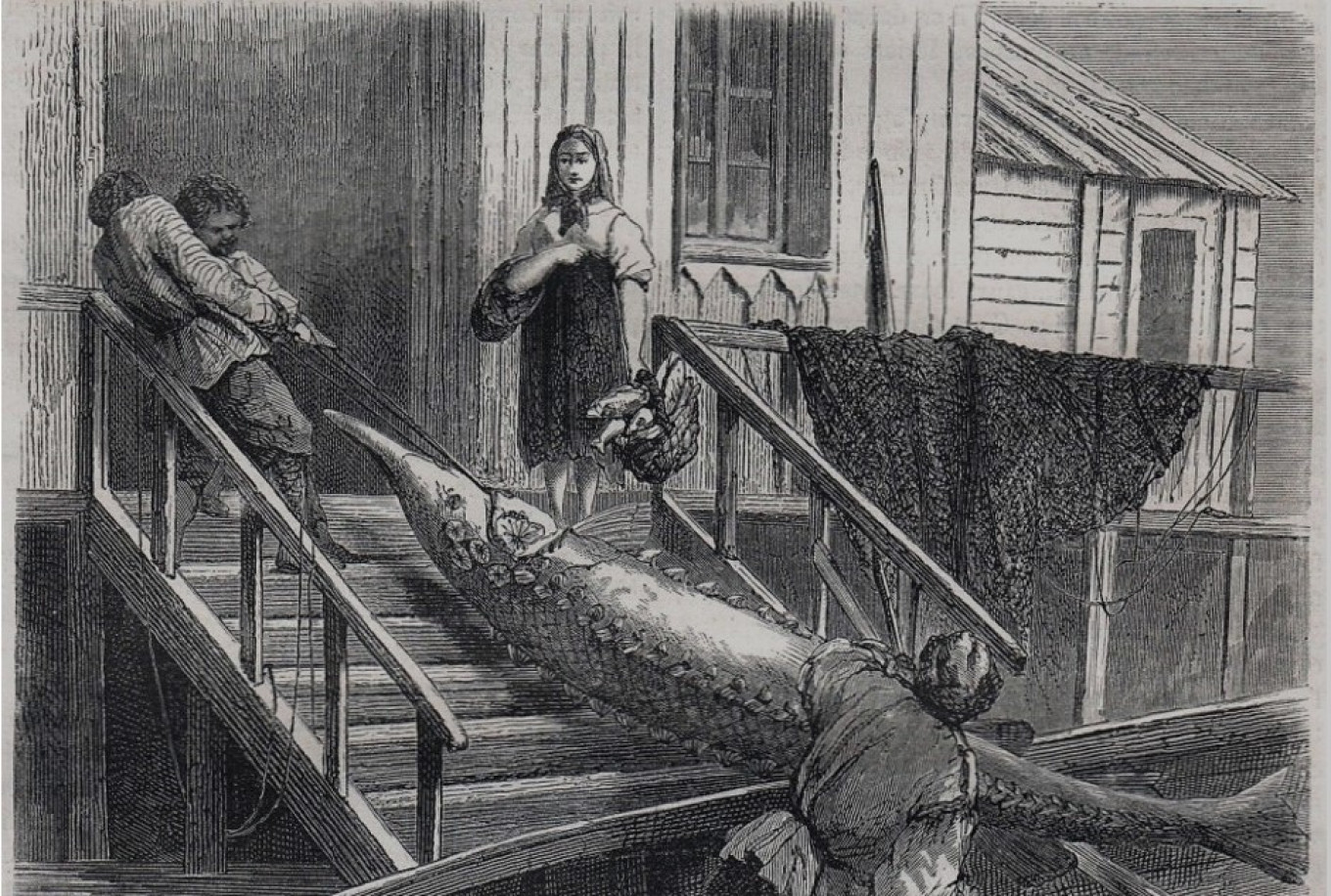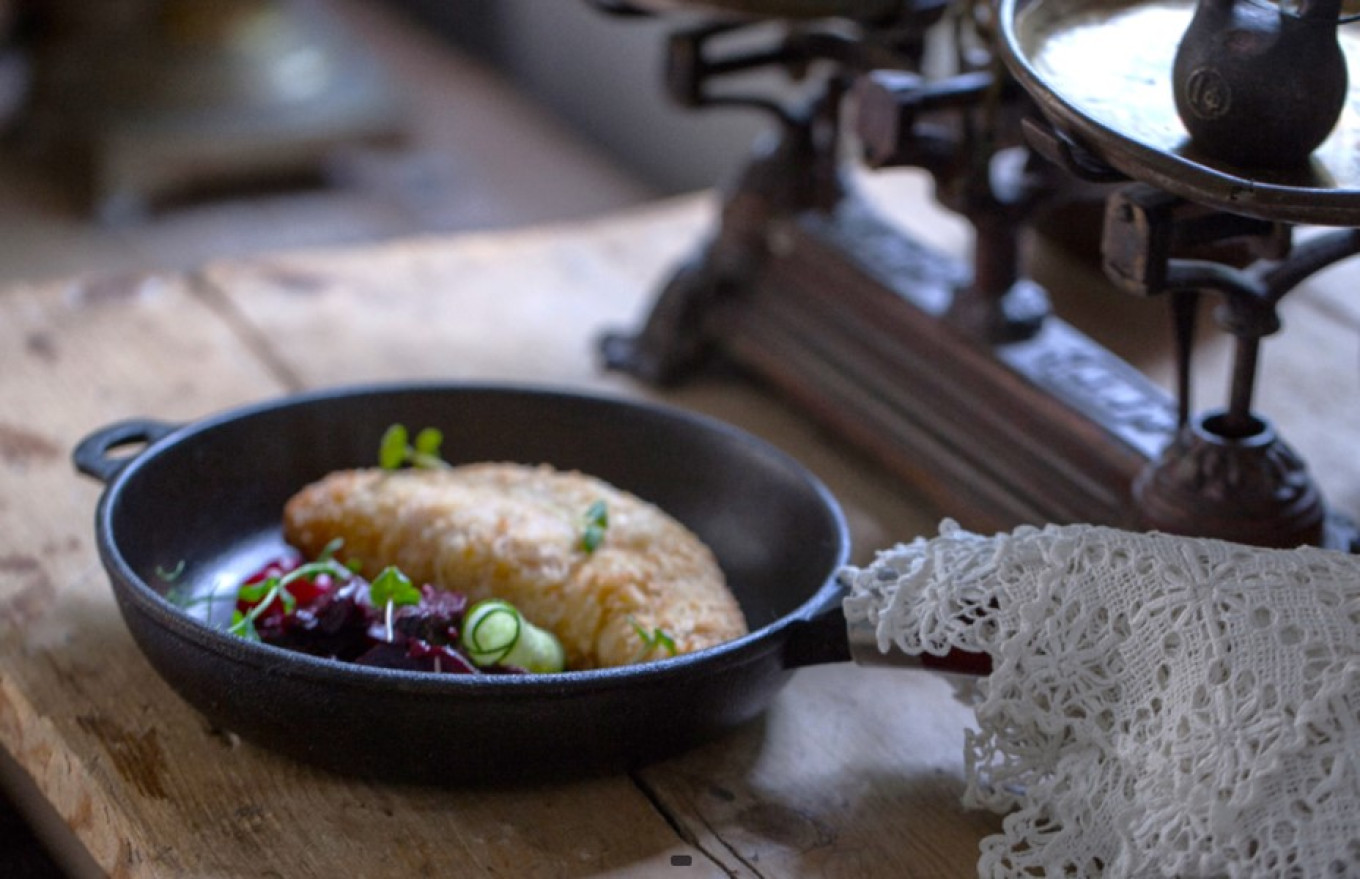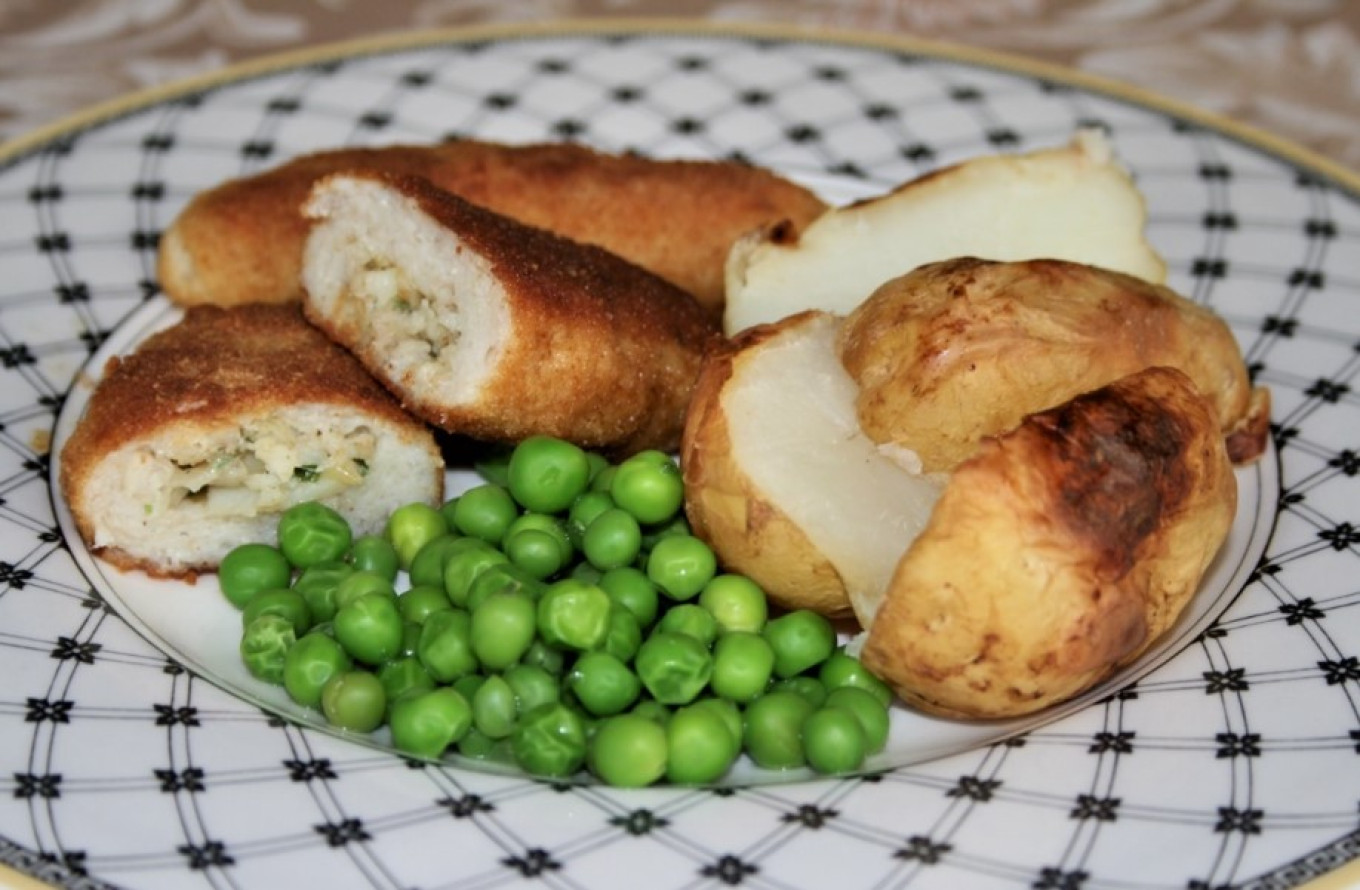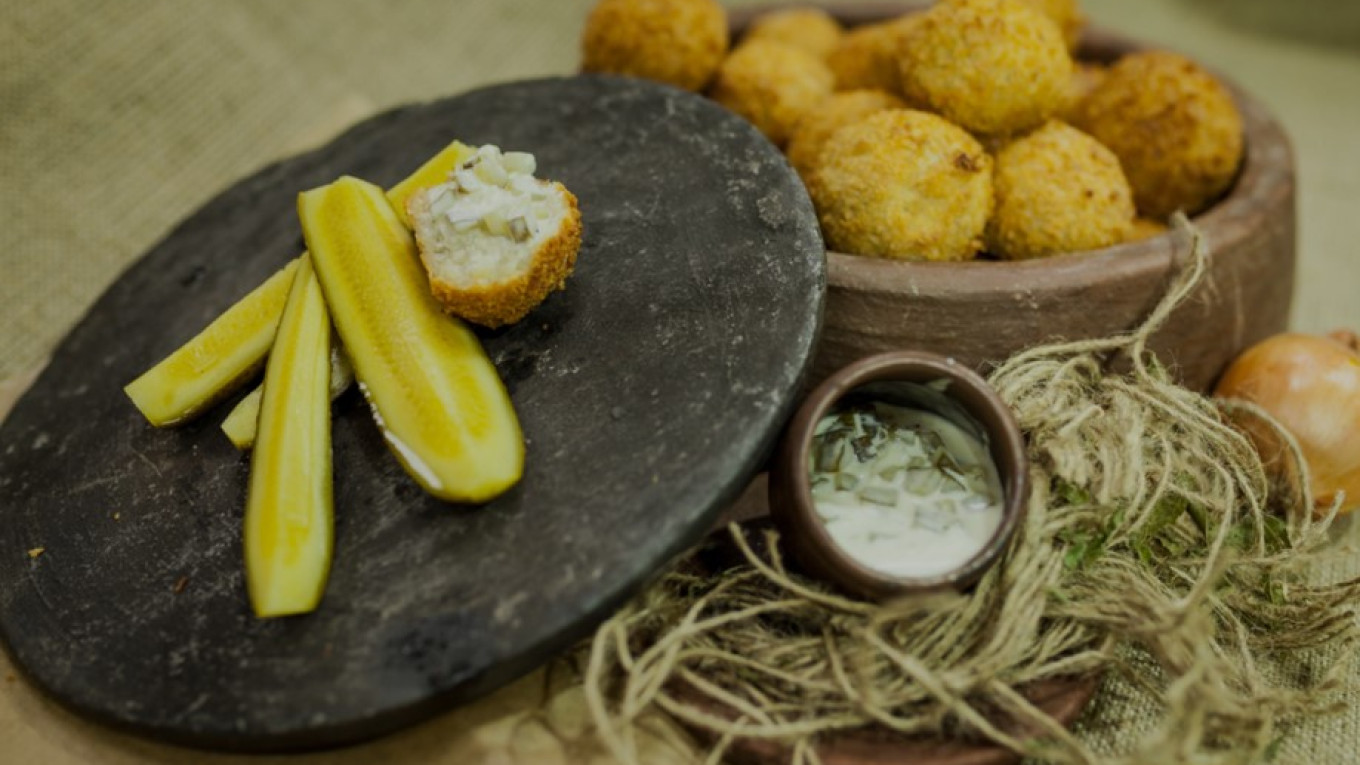We tend to complain about Russian cuisine, insisting that it hasn’t changed since the first household manual, the "Domostroi," was written centuries ago. It’s all cabbage soups, blinis, and little pastries. How can it catch up to modern times! No wonder people forget about Russian cuisine — it’s hopelessly behind the times.
There is, of course, a certain truth to these words. But let’s not generalize. Our cuisine is not hopelessly outdated, as this example will show.
Contemporary cookbooks and websites used the word "telnoye" to mean dishes such as "stuffed suckling pig" and "stuffed duck." These are dishes in which a carcass is stuffed with its own minced meat. This is a new culinary eation and has nothing to do with the old term telnoye.
Historically, telnoye was only made of fish. Here's how it is described in the "The Cooking, Serving, Confection Making and Distilling Dictionary" (1795-1797) by Vasily Levshin:
"Debone a pike a pike-perch, pound it with a knife handle. Dissolve flour and water and add to the fish to bind it. Put the dough into a moistened napkin, tie it and boil in water."
But this is not the oldest version. How do we know? Because napkins weren't used 500 years ago. Paul Aleppo, who came to Moscow in 1654 in the entourage of the Patriarch of Antioch, left this recollection: "Thanks to the abundance of fish in Russia, the Muscovites prepared various fish dishes. For example, they take all bones out of a fish, beat it in a mortar until it becomes like dough, then add onions and saffron, put it into wooden forms shaped like lambs and geese, and deep-fry in vegetable oil in large pots. Then they cut it like lamb’s tail. It is delicious. Anyone who does not know would take it for real lamb.”

All of these "minced meat” dishes were even served during Lent. As it was written in the "Domostroi," "During the Christmas fast they serve breads and stuffed piglets and ducks…” — that is, minced fish cooked in molds shaped like poultry and meat, since meat could of course not be served during Lent.
Because the dish was so beautiful and ornate, it became holiday food. After all, name days, birthdays of children and royal anniversaries sometimes fell on days during Lent.
But time goes on and the most curious things begin to happen to ancient dishes. As the fashion for European cuisine grew, our dish begins to change. For example, in the book "Lenten Cook" (1796) there is "mince pie" in which the fish “minced meat” is first sautéed, then wrapped in the minced flesh of another fish and boiled in a napkin. Then the whole construction is sent into the oven. Elaborate, isn’t it? A clear attempt to refine a historic recipe and make it fancy.
But the most interesting thing comes next: the evolution of telnoye into a European dish. The same author suggests that we make "little shaped pâtés": “Take sturgeon and mince it. Prepare yeast dough, make little pastries filled with pâté and then deep-fry them in oil.”

Doesn't it remind a little of the geese and piglets described by Paul Aleppo? In the 17th century minced fish was packed into special wooden forms, but here it is stuffed into little pastry molds. Both are then fried in oil. Over the centuries, there was a constant desire to turn traditional minced fish into something like the newfangled French pâtés of the time.
But, of course, it wasn't just the slightly inept imitation of pâtés that affected the evolution of this dish. Telnoye changed as cooking became simpler and more democratic for the growing urban middle class. In a manor house or even in a well-off peasant household, people cooked the old-fashioned way. But try to perform all this in a city apartment on a stove or primus! This is when cooks abandoned deep-frying in a big pot and began to make do with a frying pan.
Actually, this process led to the modern understanding of telnoye as small patties: balls of minced fish fried in a pan. However, even at the beginning of 20th century the recipe was more elaborate: it was always a mix of minced fish and chunks of fish. This is the version contained in Pelageya Alexandrova-Ignatyeva's classic cookbook "Practical Fundamentals of Culinary Art." Half a century later, crescent-shaped minced fish patties would be on the menu in Soviet canteens and restaurants — also called telnoye.
So, a delicious, centuries-old recipe has come down to this day. It has changed, of course, as tastes moved away from heavy food and as it was adapted to modern conditions and mass-consumerism. So much for "outdated Russian cuisine!”
We often make telnoye from pike-perch. It’s best to run the fillet through a meat grinder using a plate with small holes not once but twice. This gives the same result as the "pounding fish in a mortar" that we read about in ancient sources.

Here is a modern take on telnoye: minced fish cutlets with fish filling. Who says it’s old fashioned?
Pike-perch Telnoye
Ingredients
- 1.2 kilos (2.6 lb) pike-perch fillet (without skin)
- 200 g (7 oz. or ¾ c + 2 Tbsp) butter at room temperature
- 100 g (3.5 oz or ½ c) clarified butter
- 200 ml (7.25 oz or generous ½ c) light cream (10% fat)
- 150 g (5.3 oz or 1 ½ c) stale white bread
- 1 medium onion
- salt, black pepper to taste
- 2 eggs, breadcrumbs
Instructions
- Grind about 3/4 of the fish through a meat grinder.
- Soak the white bread in cream and then squeeze out the excess liquid.
- Put the fish through the meat grinder again along with the moist, softened bread.
- Add butter, salt and pepper to the mince. Mix thoroughly.
- Dice the remaining 1/4 of the fillet into small pieces.
- Mince the onion and lightly sauté in clarified butter. When it is soft and cooled, add to the minced fish mixture and combine well. Salt and pepper to taste.
- Form the minced fish mixture into patties. Flatten each patty with a knife, put a spoonful of diced fish in the middle. Pull the edges of the patty into the middle over the diced fish and seal. Form the patties into crescents. Tip: This is easier if you work on a table dampened with cold water.
- First place the patties in a bowl with the beaten eggs and then in the breadcrumbs.
- Sauté the patties in hot clarified butter in a pan with a thick bottom.
Serve with green peas, fried potatoes or other side dishes along with sauces: white sauce, tomato sauce or crayfish sauce.
A Message from The Moscow Times:
Dear readers,
We are facing unprecedented challenges. Russia's Prosecutor General's Office has designated The Moscow Times as an "undesirable" organization, criminalizing our work and putting our staff at risk of prosecution. This follows our earlier unjust labeling as a "foreign agent."
These actions are direct attempts to silence independent journalism in Russia. The authorities claim our work "discredits the decisions of the Russian leadership." We see things differently: we strive to provide accurate, unbiased reporting on Russia.
We, the journalists of The Moscow Times, refuse to be silenced. But to continue our work, we need your help.
Your support, no matter how small, makes a world of difference. If you can, please support us monthly starting from just $2. It's quick to set up, and every contribution makes a significant impact.
By supporting The Moscow Times, you're defending open, independent journalism in the face of repression. Thank you for standing with us.
Remind me later.







